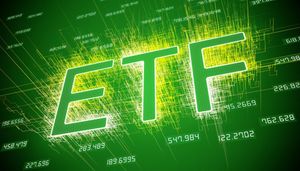
In a significant escalation of cyber warfare, North Korea-linked threat actors are actively deploying sophisticated social engineering tactics, dubbed "ClickFix," to deliver "BeaverTail" malware through elaborate cryptocurrency job scams. This ongoing campaign, part of the broader "Contagious Interview" operation, highlights the persistent and evolving security threats facing the digital asset landscape, with profound implications for individuals and institutions within the crypto community. The attacks underscore a critical need for heightened cybersecurity vigilance as state-sponsored hacking groups continue to refine their methods for illicit financial gain.
The Anatomy of Deception: How DPRK Hackers Target the Crypto Community
The latest wave of attacks, which has seen a notable surge since late May 2025, showcases an alarming level of sophistication. DPRK hackers initiate contact through seemingly legitimate job invitations, often via professional networking platforms like LinkedIn. These lures direct unsuspecting victims to meticulously crafted, bogus hiring websites, frequently hosted on services such as Vercel, designed to mimic reputable companies.
The core of the "ClickFix" tactic unfolds during simulated online assessments or video interviews. Victims are presented with fabricated technical issues, such as microphone or camera malfunctions. To "resolve" these, they are instructed to copy and paste malicious commands—typically curl commands—into their system's terminal. Unbeknownst to them, this action downloads and executes the "BeaverTail" malware from an attacker-controlled server. The campaign has also incorporated deepfake Zoom calls and malicious "coding assessment" files disguised as legitimate utilities, further blurring the lines between legitimate and malicious activity.
Initially, the "Contagious Interview" campaign focused on software developers. However, a strategic shift has been observed, with attackers now primarily targeting individuals in marketing, trader, and sales roles within cryptocurrency and retail sector organizations. Specific roles like Portfolio Manager, Investment Manager, and Senior Product Manager are in their crosshairs. The hackers have been impersonating well-known entities such as Archblock, Robinhood (NASDAQ: HOOD), eToro, and Coinbase (NASDAQ: COIN), leveraging their brand recognition to enhance credibility.
The "BeaverTail" malware itself is a potent information stealer, capable of pilfering browser passwords, system credentials, and, most critically, cryptocurrency wallet data. It targets at least 13 different cryptocurrency wallets, including MetaMask and Brave Wallet, and extracts data from various browser extensions. The malware often delivers a secondary payload, "InvisibleFerret," a multi-stage Python-based backdoor that grants attackers persistent remote control and enables sensitive data exfiltration. These attacks are not merely about data theft; they are a direct pipeline for the DPRK to fund its weapons of mass destruction (WMD) program, with billions of dollars estimated to be stolen annually from the crypto sector.
Market Ripple Effects: Winners, Losers, and the Cost of Insecurity
The persistent and evolving cyber threats from DPRK hackers have a tangible and often immediate impact on the cryptocurrency market. The sheer volume of stolen funds, estimated to be in the billions of dollars annually, directly erodes financial stability and public trust. Incidents like the September 2025 hack of the Seedify bridge, which resulted in a $1.2 million loss and caused its SFUND token to plummet by 60%, vividly illustrate the vulnerability of projects with inadequate security frameworks. Such breaches can trigger a broader decline in investor confidence, potentially deterring new users and institutional capital from entering the crypto space, thereby stifling growth and innovation.
Companies within the cryptocurrency ecosystem face significant financial and reputational risks. Those directly affected or impersonated, such as Archblock, Robinhood (NASDAQ: HOOD), eToro, Coinbase (NASDAQ: COIN), Bybit, Seedify, and DMM Bitcoin, bear the brunt of these attacks. The costs associated with incident response, forensic investigations, potential legal liabilities, and the loss of customer trust can be immense. For instance, while Binance co-founder Changpeng Zhao (CZ) assisted Seedify in freezing approximately $200,000 of stolen funds on the HTX exchange, the majority of losses often remain unrecovered, leaving projects and their investors in a precarious position.
On the other side of the coin, cybersecurity firms are emerging as crucial players in this escalating cyber conflict. Companies like GitLab Threat Intelligence, Palo Alto Networks (Unit 42) (NASDAQ: PANW), SentinelOne (NYSE: S), Genians, Validin, Mandiant (now part of Google (NASDAQ: GOOGL)), Chainalysis, and TRM Labs are at the forefront of researching, reporting on, and developing solutions against DPRK tactics and malware. Their expertise in threat intelligence, incident response, and security product development makes them invaluable partners for crypto businesses seeking to fortify their defenses. The increased demand for robust cybersecurity solutions translates into growth opportunities for these specialized firms. Furthermore, law enforcement agencies, including the FBI and the US Treasury’s Office of Foreign Assets Control (OFAC), play a critical role in combating these threats through domain seizures and sanctions, aiming to disrupt the financial infrastructure supporting DPRK cyber operations.
Broader Implications: Trust, Regulation, and an Expanded Attack Surface
The continuous onslaught of sophisticated cyberattacks orchestrated by DPRK hackers carries profound and far-reaching implications for the entire cryptocurrency sector. Beyond immediate financial losses, these incidents contribute to a significant erosion of trust among potential users and investors. The perception of an insecure environment makes individuals hesitant to engage with digital assets, hindering mainstream adoption and the broader growth trajectory of the industry. This environment also intensifies the scrutiny from governments and regulatory bodies worldwide, likely leading to the imposition of stricter rules and oversight. While intended to protect consumers, such regulations could inadvertently stifle innovation and increase compliance burdens for legitimate crypto businesses.
Moreover, the imperative to bolster defenses against these persistent threats translates into significantly higher operational costs for cryptocurrency exchanges, platforms, and projects. Investing in advanced cybersecurity infrastructure, conducting regular audits, implementing robust employee training programs, and maintaining dedicated security teams are no longer optional but essential expenditures. These increased costs can impact profitability and may eventually be passed on to users through higher fees, potentially making crypto services less attractive. The expansion of the attack surface, particularly by targeting non-technical roles like marketing and sales, highlights a critical vulnerability. Individuals in these positions may lack the specialized cybersecurity training or secure development environments typically afforded to technical staff, making them easier targets for social engineering campaigns.
Historically, state-sponsored cybercrime has been a persistent challenge across various sectors. The DPRK's pivot to targeting the crypto industry is a logical extension of its need for hard currency, circumventing international sanctions. This trend mirrors similar activities by other nation-states, emphasizing that cybersecurity is not merely a technical issue but a geopolitical one. The constant adaptation of attack methods, from initial malware distribution via malicious npm packages to compiled binaries for multiple operating systems, signifies an ongoing arms race between attackers and defenders. This dynamic necessitates continuous innovation in defensive strategies, including advanced threat detection, behavioral analysis, and proactive intelligence sharing across the industry to stay ahead of evolving threats.
What Comes Next: Vigilance and Adaptation
Looking ahead, the cryptocurrency community must brace for continued and evolving cyber threats from state-sponsored actors like those linked to North Korea. In the short term, individuals and organizations must prioritize immediate security enhancements. This includes the widespread adoption of robust multi-factor authentication (MFA) across all crypto-related accounts and platforms, strict restrictions on access to sensitive systems, and a firm policy against conducting pre-employment tests or installing any software on company devices unless explicitly verified by IT security. The human element remains the weakest link; therefore, comprehensive and continuous cybersecurity awareness training for all employees, particularly those in non-technical roles, is paramount to recognizing and thwarting social engineering attempts.
In the long term, the industry will likely witness several strategic pivots. There will be an accelerated investment in advanced security technologies, including AI-driven threat detection, blockchain-native security solutions, and decentralized identity management systems. Collaboration between cryptocurrency exchanges, cybersecurity firms, and law enforcement agencies will become even more critical, fostering intelligence sharing and coordinated responses to large-scale attacks. This collective defense approach is essential for building a more resilient ecosystem. Regulatory frameworks are also expected to mature, moving beyond basic compliance to encompass more proactive and adaptive cybersecurity mandates, potentially including mandatory security audits and incident reporting protocols.
Market opportunities will emerge for innovative cybersecurity companies specializing in blockchain security, digital forensics, and threat intelligence tailored to the crypto space. Conversely, projects and platforms that fail to adequately invest in security will face significant challenges, including loss of user trust, regulatory penalties, and potential obsolescence. The ongoing cat-and-mouse game between attackers and defenders will shape the future of digital asset security, demanding constant adaptation and a proactive stance from all stakeholders. Potential scenarios range from a hardening of the crypto ecosystem, leading to greater institutional adoption, to a more fragmented and cautious market if security concerns continue to dominate headlines.
Conclusion: A Call for Unified Defense in the Digital Frontier
The persistent and sophisticated cyberattacks by DPRK-linked hackers, leveraging tactics like "ClickFix" to deploy "BeaverTail" malware in crypto job scams, represent a critical juncture for the cryptocurrency industry. These incidents underscore the urgent need for a unified and proactive approach to cybersecurity. The financial motivations behind these attacks, directly funding North Korea's WMD programs, elevate the issue beyond mere cybercrime to a matter of national and international security. The sheer volume of stolen funds and the erosion of trust demand immediate and sustained attention from all stakeholders.
Moving forward, the market will undoubtedly place a premium on security. Projects and platforms that demonstrate robust security postures, transparent incident response mechanisms, and a commitment to user protection will likely gain a competitive advantage and attract greater investment. Conversely, those with lax security practices will face increasing scrutiny, reputational damage, and potentially severe financial repercussions. Investors should prioritize due diligence, assessing the security frameworks and track records of the projects they engage with. A multi-layered defense strategy, encompassing technological safeguards, robust organizational policies, and continuous employee education, is no longer a luxury but a fundamental requirement for survival and growth in the digital asset space.
The coming months will be crucial in observing how the industry adapts to these evolving threats. Key indicators to watch include the development and adoption of new security standards, the effectiveness of international law enforcement efforts in disrupting hacker networks, and the willingness of regulatory bodies to implement practical and supportive cybersecurity policies. Ultimately, the resilience of the cryptocurrency market against these persistent threats will depend on a collective commitment to vigilance, innovation, and collaboration in securing the digital frontier.
This content is intended for informational purposes only and is not financial advice







